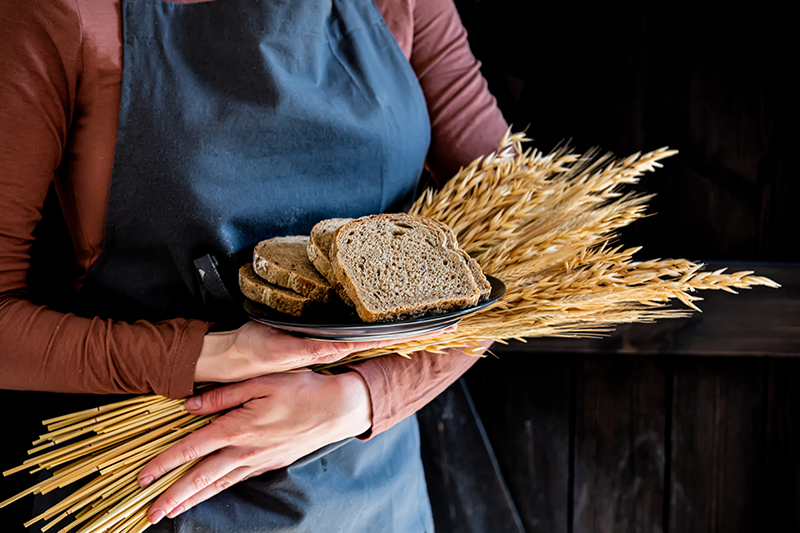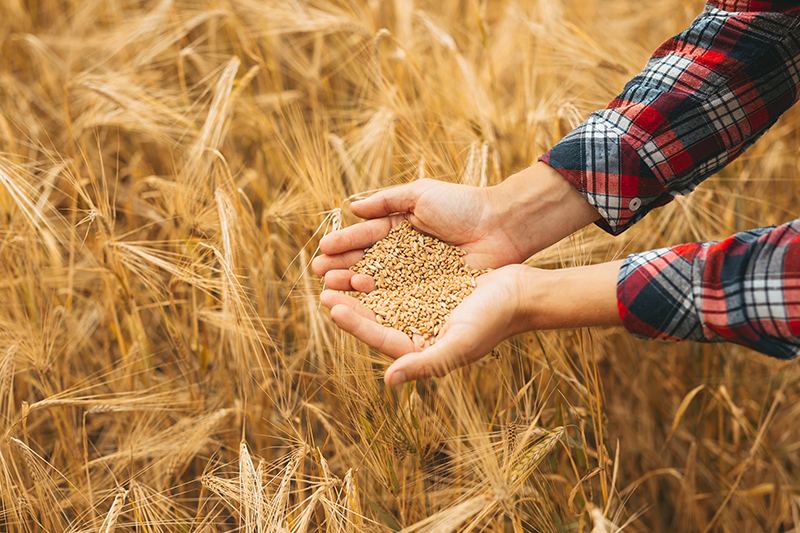Bio-degradable cards
Every card imaginable!
|
Bio-degradable cards Every card imaginable! Guide to Understanding Managing and Living with Wheat Allergy
Understanding A Wheat Allergy: A Closer LookWhat Is a Wheat Allergy?A wheat allergy happens when your body's defense system—your immune system—mistakenly flags certain proteins in wheat as a threat. Think of it as a false alarm. When you eat, inhale, or sometimes even touch wheat, your immune system triggers the release of chemicals, like histamine, which causes the allergic reaction. The specific proteins are often called albumins, globulins, and sometimes gliadins. It’s crucial to know that this is different from celiac disease, which is an autoimmune condition, and non-celiac gluten sensitivity, which doesn't involve the same type of immediate immune response. A wheat allergy is a true food allergy and can cause symptoms that range from minor—like hives or an upset stomach—to very serious, affecting breathing or circulation. How Common Is a Wheat Allergy?It's one of the more frequently seen food allergies, particularly among young children. While we don't have a single, perfect number for everyone, estimates often place it among the top food allergens affecting children. It’s important to remember that while it's most common for a child to be diagnosed, adults can absolutely develop a wheat allergy as well, sometimes quite suddenly. It’s a well-recognized condition across all age groups, but it requires significant management in schools and daycares due to its prevalence in younger populations. What Age Is a Wheat Allergy Most Likely?The vast majority of wheat allergy cases show up early in life, typically in infancy or before a child starts kindergarten. This is usually when a baby is first introduced to common wheat-containing foods like baby cereal, bread, or pasta. It’s often considered a temporary visitor. It’s a bit of good news that a child's immune system often matures enough to tolerate wheat, and they can successfully outgrow the allergy, sometimes by the time they are three to five years old. However, in some individuals, the allergy sticks around, and in rare cases, a person might even develop it for the first time as a teenager or adult. Will a Wheat Allergy Go Away?Often, yes, especially if the diagnosis happened in childhood. Wheat allergy has a relatively high rate of spontaneous resolution compared to, say, a peanut or shellfish allergy. However, you can’t simply guess. It’s vital to work closely with an allergist who can monitor the allergy with regular blood tests and, eventually, perform a carefully controlled oral food challenge in a clinical setting to confirm if it’s truly gone. For those who don't outgrow it—and this is more common when the allergy develops in adulthood or persists past the teenage years—it will require a lifetime of careful food choices and label reading. 
Recognising Symptoms and Seeking DiagnosisWhat Are the Symptoms of Being Allergic to Wheat?The signs that you’ve had an allergic reaction to wheat can show up quickly, often minutes to an hour after eating it, and they can affect various parts of your body.
How Do I Get Tested for a Wheat Allergy?Diagnosing a wheat allergy involves a bit of detective work between you and an allergist. It starts with a detailed talk about your symptoms, when they happen, and what you’ve eaten. The main tests used are:
Remember, test results can sometimes be misleading (false positives or negatives), so an allergy specialist needs to interpret everything in the context of your personal history. Is a Wheat Allergy the Same As a Gluten Allergy?No, these are two very different conditions, and it’s a really common point of confusion!
The biggest difference is the body's response: one is a rapid, potentially severe allergic reaction (wheat allergy); the other is a gradual, chronic autoimmune attack that damages the gut (celiac disease). What Happens If You Ignore a Wheat Allergy?Ignoring a diagnosed wheat allergy is risky and can seriously affect your health in two main ways:

Treatment and Management StrategiesWhat Treatment Is There for a Wheat Allergy?When it comes to a wheat allergy, the most effective and primary "treatment" is simple: strict avoidance. Since there’s currently no cure, managing the allergy is all about keeping wheat out of your diet and your life. Here’s what that involves:
What Bread Can I Eat If I'm Allergic to Wheat?Giving up regular bread is tough, but fortunately, the market for wheat-free alternatives has exploded. You have many great options! Safe breads for a wheat allergy are those made from flours based on other grains or sources, such as:
The key thing to remember is to always look at the ingredient list of any packaged bread, even if it claims to be "gluten-free." A product can be made from a safe grain, but sometimes it will contain a small amount of wheat for texture or as a stabilizer. Also, be aware of cross-contamination warnings, as many bakeries that make wheat-free bread also handle traditional wheat products. Can I Eat Oats If I'm Allergic to Wheat?For most people with a wheat allergy, pure oats are perfectly fine to eat. Oats are a different cereal grain and do not contain the specific wheat proteins that trigger an allergic reaction. However, here’s the big catch: most commercially processed oats are grown, harvested, and milled using the same equipment and facilities that handle wheat. This means that a standard bag of oats often contains tiny bits of wheat from what’s called cross-contamination. To be truly safe and avoid a reaction, you must look for oats that are specifically labeled and certified as:
When in doubt, always choose certified, dedicated wheat-free oats to minimize the risk of accidental exposure. 
Dietary Adaptations and AlternativesDoes Pasta Contain Wheat?Yes, traditional pasta—like spaghetti, macaroni, and fettuccine—is primarily made from durum wheat and is definitely not safe for someone with a wheat allergy. The good news is that you don’t have to give up pasta night! Grocery stores now carry a huge variety of safe, wheat-free pasta alternatives. Look for options made from single or combined ingredients like:
These alternatives cook up very similarly to regular pasta and allow you to enjoy all your favorite sauces and recipes without worry, provided you confirm they are free from wheat ingredients. Can I Eat Sourdough If I'm Allergic to Wheat?You should assume that traditional sourdough bread is off-limits. Most classic sourdough recipes use wheat flour as their main ingredient, and even the fermentation process does not eliminate the wheat proteins that trigger an allergic reaction. However, the "sourdough" method itself—the process of using a fermented starter to leaven the bread—can be applied to any flour. This means you can look for specialty breads made using a sourdough starter that is based entirely on wheat-free flours, such as rice, millet, or buckwheat. If you find a bread labeled as Gluten-Free Sourdough," it is generally safe, but you must still read the label to ensure it doesn't contain any hidden wheat ingredients. What Foods Contain Wheat?Wheat is a versatile and common ingredient, so it shows up in far more places than just the bread aisle. Avoiding it requires a sharp eye, as it can hide in both obvious and unexpected foods. Obvious sources include:
Unexpected or hidden sources often found in processed foods:
When in doubt, if a product is packaged or prepared outside your home, reading the allergen statement on the label is the safest first step. What Foods Can I Eat With a Wheat Allergy?The great news is that a wheat-free diet is still incredibly rich, diverse, and nutritious. You are safe to enjoy the vast majority of whole, unprocessed foods. Here are the categories of foods that form the foundation of a safe wheat-free diet:
Many products labeled "gluten-free" are also suitable for a wheat allergy, but always do a final check of the ingredients list for any specific wheat derivatives, and look for cross-contamination warnings. "I'm Allergic to Wheat" Cards: Essential for Managing Your AllergyLiving with a wheat allergy requires constant vigilance. This is where our "I'm Allergic to Wheat" card comes in as an invaluable tool. These cards are designed to be clear, straightforward, and immediately recognizable. Featuring a simple wheat image and the clear these cards serve several crucial functions for anyone managing this allergy. Why Carry an "I'm Allergic to Wheat" Card1. Clear Communication in Critical Situations: In emergency situations or when you're unable to communicate effectively, this card speaks for you, informing others of your allergy quickly and clearly. 2. Dining Out with Peace of Mind: When eating out, it can sometimes be challenging to convey dietary restrictions. Handing this card to the serving staff or chef ensures they're aware of your allergy, reducing the risk of accidental exposure. 3. Educational Tool: The card can be a conversation starter, helping to educate friends, family, and the public about wheat allergies and the importance of allergen avoidance. 4. Travel Companion: Travelling, especially abroad where language barriers exist, can be daunting. This card transcends language barriers, conveying your dietary needs clearly and effectively. Affordable and AccessiblePriced at £4.99 each, these cards are an affordable way to manage your wheat allergy. We offer price breaks for multiple purchases: Buy 2 or more at £4.50 each Buy 3 or more at £4.25 each Buy 4 or more at £4.00 each Buy 5 or more at £3.50 each Catering to a Range of AllergiesWe understand that wheat allergy is just one of many. That's why we offer a range of a llergy cards: Wheat Allergy Sesame Allergy Bee Sting Allergy Dairy Allergy Penicillin Allergy Aspirin Allergy Antibiotics Allergy Gluten Allergy Nut Allergy Egg Allergy Shellfish Allergy Soya Allergy Ibuprofen Allergy Latex Allergy Nickel Allergy Contact Dermatitis I carry an EpiPen" card Each of these cards is designed with the same clear and straightforward approach, providing vital information in situations where communication might be challenging. They are an essential tool for anyone managing allergies in their daily life. To explore the full range of our allergy cards and find the ones that suit your needs, please visit our website. Stay informed and safe with the right allergy card from our collection.
© 2024 The Card Project Uk Ltd
VAT: 453 2087 06
|